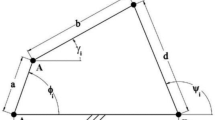Abstract
The vertical decomposition method is used to synthesize optimal distillation systems, and its advantages over the integral approach are demonstrated by several examples. The optimality of the system synthesized by the Fenske-Underwood-Gilliland simplified method was checked by using the ASPEN PLUS modeling program.
Similar content being viewed by others
References
Nishida, N., Stephanopolous, G., and Westerberg, A.W., A Review of Process Synthesis,AIChE J., 1981, vol. 27, no. 3, p. 321.
Hendry, J.E. and Hughes, R.R., Generating Separation Process Flowsheets,Chem. Eng. Prog., 1972, vol. 68, no. 6, p. 71.
Rathore, R.N.S., Van-Wormer, K.A., and Powers, G.J., Synthesis Strategies for Multicomponent Separation Systems with Energy Integration,AIChE J., 1974, vol. 20, no. 3, p. 491.
Lee, K.F., Masso, A.H., and Rudd, D.F., Branch and Bound Synthesis of Integrated Process Design,Ind. Eng. Chem. Fundam., 1970, vol. 9, p. 48.
Lawler, E.L. and Wood, D.E., Branch and Bound Methods: A Survey,Oper. Res., 1996, vol. 14, no. 4, p. 699.
Westerberg, A.W. and Stephanopolous, G., Branch and Bound Strategy with List Techniques for the Synthesis of Separation Schemes,Chem. Eng. Sci., 1975, vol. 30, no. 2, p. 96.
Morari, F. and Faith, D.C., The Synthesis of Distillation Trains with Heat Integration,AIChE J., 1980, vol. 26, no. 5, p. 916.
Benders, J.F., Partitioning Procedures for Solving Mixed Variables Programming Problems,Numer. Math., 1962, vol. 4, no. 3, p. 238.
Floudas, C.A., Aggarwal, A., and Ciric, A.R., Global Optimum Search for Nonconvex NLP and MINLP Problems,Comput. Chem. Eng., 1989, vol. 13, no. 6, p. 1117.
Sahinidis, N.V. and Grossman, I.E., Convergence Properties of Generalized Benders Decomposition,Comput. Chem. Eng., 1991, vol. 15, no. 5, p. 481.
Andrecowich, M.J. and Westerberg, A.W., An MILP Formulation for Heat-Integrated Distillation Sequence Synthesis,AIchE J., 1985, vol. 32, no. 8, p. 1461.
Aggarwal, A. and Floudas, CA., Synthesis of Heat-Integrated Non-Sharp Distillation Sequences,Comput. Chem. Eng., 1992, vol. 16, no. 1, p. 23.
Viktorov, V.K., Synthesis of Optimal Large Heat-Exchange Systems,Teor. Osn. Khim. Tekhnol., 1984, vol. 18, no. 5, p. 706.
Viktorov, V.K., Combinatorial-Evaluation Method for the Synthesis of Optimum Heat-Exchange Systems from Enthalpy-Temperature Diagrams,Teor. Osn. Khim. Tekhnol., 1993, vol. 27, no. 3, p. 331.
Ostrovskii, G.M and Berezhinskii, T.A.,Optimizatsiya khimiko-tekhnologicheskikh protsessov. Teoriya i praktika (Optimization of Chemical Processes: Theory and Practice), Moscow: Khimiya, 1984.
Horst, R. and Tuy, H.,Global Optimization, Berlin: Springer, 1995.
Reid, R.C., Prausnitz, L.M., and Sherwood, T.K.,The Properties of Gases and Liquids, New York: McGrawHill, 1977.
ASPEN PLUS, Cambridge: Aspen Tech. Inc., 1996.
Author information
Authors and Affiliations
Rights and permissions
About this article
Cite this article
Klenkov, I.V., Viktorov, V.K. Vertical decomposition in the synthesis of distillation systems. Theor Found Chem Eng 34, 150–156 (2000). https://doi.org/10.1007/BF02757833
Received:
Issue Date:
DOI: https://doi.org/10.1007/BF02757833




